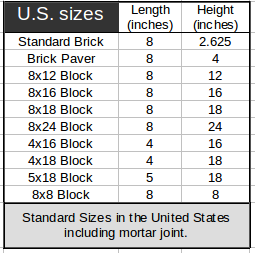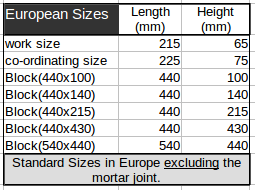Concrete around Circular Post
The Concrete around Circular Post in Hole calculator computes the volume of concrete needed around a number of circular posts in circular holes.
INSTRUCTIONS: Choose units and enter the following:
- (HD) Depth of the Hole
- (HW) Width of the Hole
- (PW) Post Width
- (n) Number of Post Holes
Concrete to Fill Post Hole (V): The calculator returns the volume in cubic yards. However this can be automatically converted to other volume units via the pull-down menu.
The Math / Science
The formula for the volume of a circular column is:
V = π•r²•h•n
where:
- V = Volume of the column
- r = radius of the base
- h = height of the column
- n = number of columns or piers
This calculator subtracts the column defined for the post from the column defined for the whole and then multiplies that difference by the number of post holes.
Related Calculators:
Concrete Supported Posts
Augers are often used to drill post holes. If that's not an option, we recommend a digging iron and a posthole digger. After the hole is dug, it's ideal to put a little gravel at the bottom of the hole for water drainage during wet seasons. Then place the post in the hole and surround it with concrete to truly anchor the post.
Retail Concrete Price Survey:
- Survey Date: 6/17/24
- Retail Price Source: MULTIPLE
- Manufacturer: MULTIPLE
Pricing Survey Space
The survey data above comes from nationally advertised pricing from retailer websites. Currently, the pricing sources are:
- Menards (www.menards.com)
- Home Depot (www.homdepot.com)
- Lowe's (www.lowes.com)
- MULTIPLE - When one source does not have a price point for all sizes of products. In this case, MULTIPLE sources are used.
If you wish your information to be part of the survey, please contact vCalc via the Feedback function.
CAUTION: The pricing information provided is for calculating convenience with NO implied guarantees to the accuracy of the values listed. Authoritative sources should be sought to confirm any value before risking health or wealth on the veracity of the data. Furthermore, Calc gives no guarantee that you will be able to buy products at listed prices or even if they will be available. The data provided is purely a convenience for making estimates, so we repeat, ALWAYS use local pricing and authoritative specifications.
Take the answer from this calculator and enter it in the Concrete Bags from Volume calculator (CLICK HERE).
Masonry Calc (Concrete, Brick and Block, Rebar)
The MASONRY suite includes collections of functions associated with product estimations on projects done with brick, block, concrete and rebar.
Concrete Slab Calculators
The following functions apply to estimating the amount of concrete, rebar, form boards and water needed for concrete slabs of different shapes: rectangular with squared corners, circular including semi-circle, and polygon shapes from triangular up (e.g., pentagon for 5 sides and dodecagon for 12 sided polygon).
Rectangle Slab
- Rebar and Concrete in a Slab: Computes the total length and weight of rebar and the volume and weight of concrete needed for a rectangular slab, taking into account the concrete displaced by the rebar.
- Concrete in Rectangle Slab: Computes the volume of concrete in a rectangle (squared corners) slab based on the dimensions. It includes the volume of concrete in cubic yards and the equivalent volume in bags of concrete. It also includes the surface area, length of form boards, and the water requirement.
- Slab Weight: Computes the weight, volume of concrete and surface area of a rectangle slab based on the length, width and depth of the concrete of the slab and the density of concrete.
- Weight of Slab with Rebar: Computes the weight of a rectangle slab with rebar based on the length, width and depth of the concrete of the slab, the density of concrete and the size and spacing of rebar. It includes total weight (concrete and rebar), and the contribution of weight from rebar and concrete separately.
- Slab Area and Perimeter: Compute the surface area and perimeter of a rectangular slab based on the dimensions.
Circular Slab
- Volume of Circular Slab: Computes the slab surface area, perimeter and cubic yards of concrete in a circular slab based on the diameter and depth. It also provides, the equivalent volume in 80lb, 60lb and 40lb bags of concrete and the water requirement.
- Circular Slab Weight: This computes the weight of the concrete in a circular slab based on the diameter, depth and density of concrete.
- Rebar and Concrete in a Circular Slab: This computes the length and weight of rebar in a rectangular slab. It also computes the total weight of the slab including concrete, taking into account the concrete displaced by rebar.
- Semi-Circle Slab Volume: Computes the volume of concrete needed for a semi-circular slab based on the radius and depth.
- Semi-Circle Slab Weight: Computes the weight of concrete in a semi-circular slab based on the radius, depth and density of concrete.
Polygon Slab
- Concrete in Polygon Slab: Computes the surface area and cubic yards of concrete for a polygon slab based on the dimensions and depth. It also provides the equivalent volume of concrete in 80lb, 60lb and 40lb bags of concrete.
General Functions
- Concrete Weight: Computes the weight of a specified volume (e.g., 2.3 cubic yards) of concrete.
- Price of Delivered Concrete: Computes the price of delivered concrete based on the volume, price per cubic yard, pumping cost, delivery distance, and mileage.
- Water Needed for Concrete: Compute the amount of water needed to make a volume of concrete.
- Concrete Displaced by Rebar: Computes the volume of concrete displaced by a length of rebar based on the length and size of rebar.
Masonry Walls (Brick, Block, Mortar Joints)
- Brick or Block Wall: Computes the number of brick or block needed for a wall based on dimensions.
- Bricks or Blocks in a Wall
 : Computes the number of standard U.S. brick or block needed for a wall using feet and inches.
: Computes the number of standard U.S. brick or block needed for a wall using feet and inches. - European Brick or Block in a Wall
 : Computes the number of standard European bricks or block in a wall using meters and centimeters.
: Computes the number of standard European bricks or block in a wall using meters and centimeters. - Custom Stone in a Wall: Computes the number of masonry units (stone, block or stone) in a wall based on the dimensions of the wall and the dimensions of the units and the thickness of the mortar joints. It also returns the number of rows needed and the number of stone per row.
- Concrete, Rebar and Forms for Wall: Computes the volume of concrete, amount of rebar and the surface area of forms for a concrete wall.
Foundations - Footers - Piers
- Blocks in a Foundation: Computes the number of blocks needed for a foundation based on the dimensions of the foundation and the size of the blocks with a standard size mortar joint.
- Concrete in a Poured Foundation
: Compute the volume of concrete, the square feet of the forms and the number of 4'x8's needed for the forms.
- Concrete in a Footer: Computes the volume of concrete for a footer based on the length, width and depth of the footer.
- Concrete in a Footer (Cross Section): Computes the volume of concrete for a footer based on the length and cross-section area of a footer
- Concrete in a Pier: Computes the volume of concrete in a circular pier based on the radius and depth of the pier.
- Piers for a Building: Computes the number of piers and volume of concrete need for the piers of a building (e.g., pole barn) base on the building dimensions, pier spacing, diameter and depth.
- Concrete around Circular Post: Computes the volume of concrete around a number of round posts in a round hole based on the size of the hole and dimensions of the post.
- Concrete around Square Post:
Computes the volume of concrete around a number of square post (e.g., 6x6) in round hole based on the dimensions of the post, depth and width of the round hole.
Equations and Data Items
Collections
- Comments
- Attachments
- Stats
No comments |

